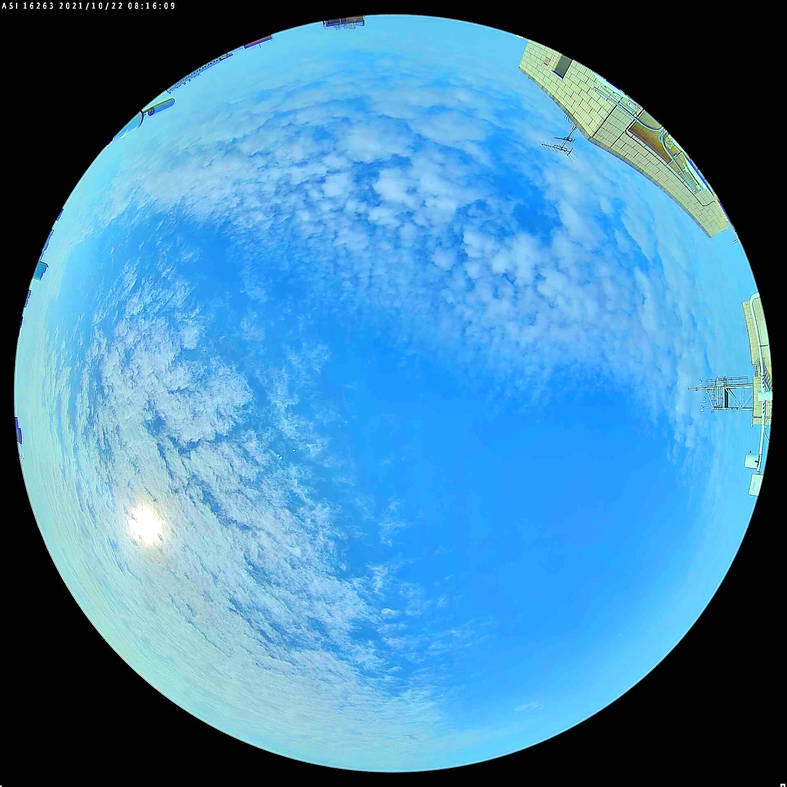《TAIPEI TIMES》 Sky cameras to help solar power sector, CWB says

A view of the sky taken with an all-sky camera at a meteorological station in Tainan is pictured on Nov. 10. Photo courtesy of the Central Weather Bureau
By Chen Hsin-yu and Jonathan Chin / Staff reporter, with staff writer
A planned network of sky cameras would help the solar industry more precisely forecast solar radiation, the Central Weather Bureau (CWB) said.
The bureau on Dec. 11 said that it would install 10 all-sky cameras to enable accurate weather predictions, which are critical to the efficient production of solar energy and grid management.
Four of the 10 cameras have already been installed for testing at weather stations in Tainan, and Changhua and Pingtung counties, it said.
Difficulties in predicting cloud cover are partly to blame for inhibiting the growth of Taiwan’s solar sector, which is dependent on weather conditions, said Hung Chin-shan (洪景山), director of the bureau’s meteorological information center.
Light rain or a small cloud can reduce the output of a solar power plant by up to 50 percent, he said.
Clouds are of particular concern because they are made of fine ice and water particles, making them harder to detect by space-based radar systems, he said, adding that cloud formations also change too quickly for satellites to track them.
The bureau’s forecasts of solar radiation over Taiwan are about 80 percent accurate, with errors due to unpredictable factors such as cloud cover, air pollution and dust storms, said Teng jen-hsing (鄧仁星), a researcher at the bureau’s Research and Development Division.
The system uses high-powered, fish-eye cameras that can reveal cloud conditions by detecting visible-spectrum light in the sky within 15km, which the bureau can monitor in real time, he said.
The data would enable the bureau to create accurate estimates and predictions of solar radiation levels to aid solar power plants, he said.
The information helps grid operators anticipate the rise and fall of the solar energy supply to timely switch to conventional power sources to meet demand, he said.
The cameras cost NT$200,000 to NT$300,000 per system, and the bureau plans to procure all-sky infrared imagers to enable nighttime observations should funding become available, he said.
The bureau’s current system is about 90 percent accurate in predicting the volume of solar energy production, and the cameras are expected to improve that figure by 3 to 5 percentage points, he said.
新聞來源:TAIPEI TIMES














